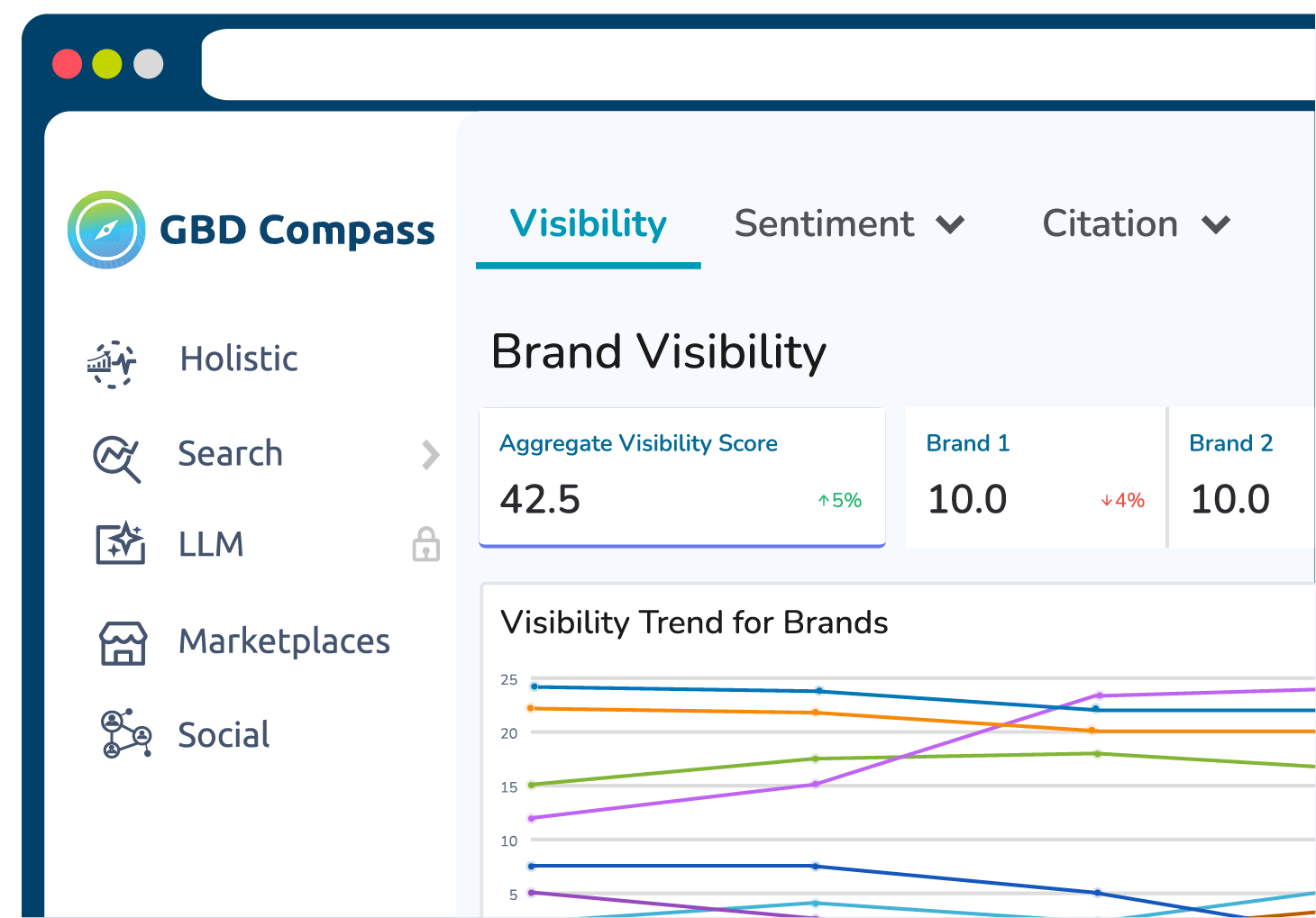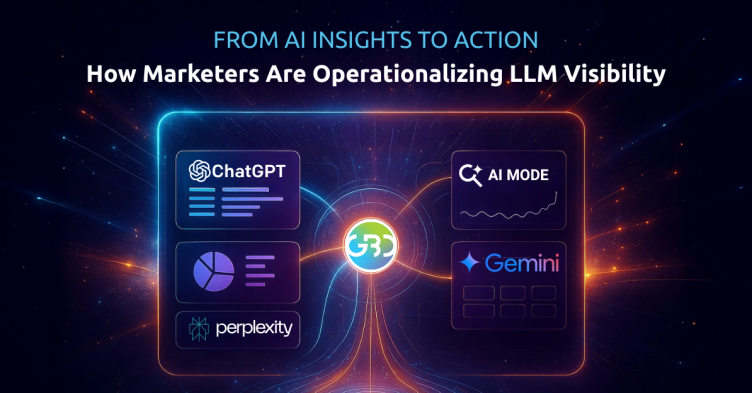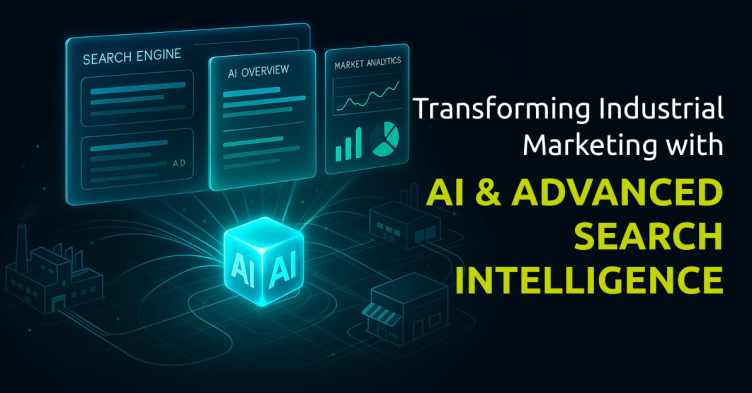Across industries, marketing and search leaders are asking a new kind of question:
“Are we visible where AI engines are answering for our customers?”
Traditional search tools can’t fully answer that. Rankings alone reveal little about how AI platforms represent a brand. And in conversations with enterprise teams, one trend has become clear: organizations want to understand their visibility within AI-generated answers, what drives those results, and how to translate those insights into strategic action.
This shift has given rise to LLM visibility intelligence, an emerging discipline that measures visibility, sentiment, and influence across platforms such as:
- ChatGPT
- Perplexity
- Google AI Overviews
- Google AI Mode
1. Why Keyword Research Alone Isn’t Enough Anymore
Marketers are recognizing the limits of traditional keyword data. Google’s keyword tools capture only a fraction of real search behavior and in AI environments, there is no such thing as “prompt volume.”
Every user expresses intent differently. Two people may ask for the same information in completely different ways, producing entirely different AI answers.
Modern visibility analysis reflects this reality. Through AI-backed clustering and human validation, teams now build a “prompt universe” mapping how real customers ask questions in natural language, from broad explorations to long-tail, application-specific queries like:
“best sanitary flow meter for beverage manufacturing”
This reveals how customers truly think and search, rather than how marketers assume they do.
For a deeper look into how prompts shift AI-generated citations day to day, see:
→ When AI Citations Shift Overnight: Tracking the New Search Frontier
Understanding How AI Engines Choose Their Answers
A growing challenge for brands is understanding why they appear or fail to appear inside AI-generated results.
This comes down to three core dimensions:
- Visibility
How frequently the brand surfaces across major LLMs. - Sentiment
How the AI describes the brand: positively, neutrally, or comparatively. - Citations
Which domains influence the AI’s reasoning and narrative.

Across industries, one pattern repeats: AI engines often cite Google-owned or large aggregator sites before manufacturer domains.
That means visibility now depends on improving AI citation authority earning mentions on the trusted sources AI pulls from most often.
→ How Brands Appear in AI Search and What GrowByData’s New Platform Reveals
Connecting AI Visibility with Google Search Intelligence
AI visibility does not replace traditional search, it extends it.
A unified visibility framework connects:
- Paid Search: Showing every advertiser and full ad copy, beyond what Auction Insights reveals.
- Organic & Merchant Listings: Understanding presence in free product grids, rich results, and “popular product” modules.
- AI Search Visibility: Tracking mentions, sentiment, citations, and inclusion across ChatGPT, Perplexity, Gemini, and Google AI Overviews.
For the first time, brands can see their presence across Paid, Organic, and AI in one connected view revealing gaps and opportunities that were previously invisible.
For a detailed comparison of how tools measure these layers, explore
→ Why GrowByData Outperforms Profound and Otterly
The Human-in-the-Loop Advantage
As search engines restrict automated scanning, accuracy has become the new differentiator.
Many AI and search tools struggle with reliability.
A hybrid system, combining automation with human-in-the-loop validation, ensures datasets reflect authentic search environments.
By simulating real, logged-in user conditions and adding analyst oversight, irrelevant or non-contextual results are removed before insights reach decision-makers.
This creates enterprise-grade precision and ensures that strategy is based on how customers actually experience search and AI ecosystems.
From Reports to Real Strategy
Most organizations are tool-rich but time-poor. They have data everywhere but limited capacity to interpret and act on it.
A collaborative “do-it-with-you” model bridges that gap, pairing analytics with expert strategic support to help teams:
- Identify underperforming product categories or regions.
- Determine which domains shape AI perception.
- Strengthen Merchant Center feeds and schema for AI-friendly content.
- Audit agency performance to validate competitive accuracy and ROI.
- This approach doesn’t just inform, it empowers execution and measurable outcomes.
From Flow Meters to Frameworks: A Universal Pattern
Across sectors, industrial sensors, electronics, apparel, home furnishings, the same trends appear:
- Strong SEO brands often underperform in AI visibility.
- Non-branded, problem-based prompts reveal the widest competitive gaps.
- Well-structured product data and schema-rich pages improve inclusion in AI answers.
These insights confirm that success in the AI era isn’t about chasing keywords.
It’s about structured intelligence, credible citations, and contextual content that AI engines trust.
Platforms like GrowByData’s AI Search Visibility Monitoring tool help enterprises turn these insights into measurable competitive visibility across AI engines.
For a broader perspective on this multi-surface visibility model, see
→ The New Era of Search Visibility: How LLMs Are Changing the Game
Conclusion
Search is no longer just a list of links, it’s a conversation.
Brands that measure only rankings are missing the new discovery touchpoints where customers begin their journey: in ChatGPT, Perplexity, AI Mode, and Google AI Overviews.
With the right visibility intelligence, organizations can see what AI sees, understand what shapes those answers, and act on them, unifying insights across both Google and LLM ecosystems.
Because the question is no longer: “Where do we rank?”
It’s: “How visible are we when AI answers for our customers?”
Start your Total & AI Search Free Trial →
Position your brand where AI answers begin.




